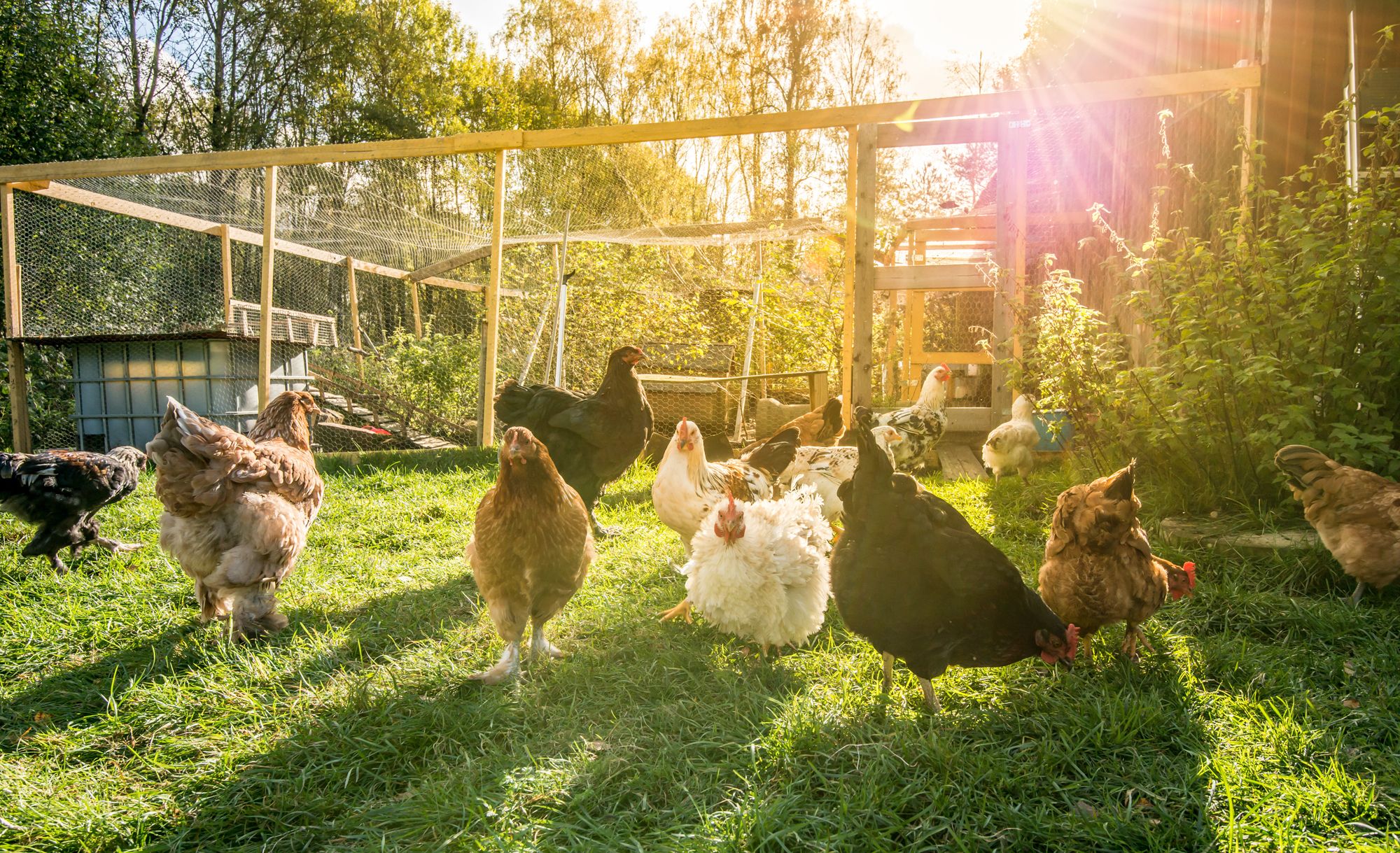Protein Label Ponderings


Why ‘more is always better’ really isn’t
There is probably not a more misunderstood item on a feed bag or label than crude protein. Certain levels of crude protein have become standard, e.g., 16% layer feed, 18%, or 21% chick starter.
But what does it really mean and is 16% a magic number?
Many people think “more is always better” and use the crude protein level of a feed to compare it to others. Let’s dive into why that’s not the best idea.
Polymers, aminos, and building blocks
First we need to understand what protein really is. At the most basic level, a protein is a polymer made up of a string of chemical building blocks called amino acids. In nature, there are over 500 known amino acids, but only 20 appear in genetic code. Of these 20, some are considered essential amino acids and some are non-essential.
Essential amino acids must come from the diet because chickens don’t have the ability to create these amino acids but they can create non-essential amino acids from other amino acids or sources. Essential amino acids are methionine, lysine, threonine, isoleucine, valine, tryptophan, arginine, histidine, phenylalanine, and leucine.
Although these amino acids must all be supplied by the diet, nutritionists typically only worry about lysine, threonine, isoleucine, valine, tryptophan, and sometimes arginine. In a typical diet, the ingredients supply plenty of histidine, phenylalanine, and leucine so we don’t worry about it.
For the same reason, we don’t typically worry about non-essential amino acids. There are either plenty of them supplied from the ingredients in the diet regardless of the formulation, or the bird can make enough of them to supply its needs. However, some of them are considered “conditionally essential.”
For example, by precision-feeding essential amino acids we can reduce crude protein, but if we reduce crude protein too much, we can limit non-essential amino acid levels to the point that the birds must expend energy to produce them—this limits growth performance or egg production.
Daily living and the protein ball
There are also times when a bird has additional amino acid needs such as during illness or any other stress. For instance, when dealing with intestinal pathogens or inflammation, mucin synthesis is enhanced (the mucus that protects the lining of the intestines). Mucin is high in threonine, so this amino acid is diverted from its use for egg production or muscle accretion. In this case, egg production or growth may be limited by an otherwise adequate amount of threonine.
Each amino acid shares the same basic structure, but certain conditions are what makes a protein fold into its unique shape. Think of a ball of string or a chain with different chain links that have various magnetic properties.
The unique shape of the protein is what gives it its properties whether as part of a muscle fiber, a hormone, a signaling molecule, an enzyme, etc.
When birds consume proteins in their diet, they are denatured or unfolded by the acidic environment in the proventriculus and gizzard and then broken down into 1 or 2 amino acid segments by digestive enzymes. These are then absorbed into the blood stream and can be used by the bird to create any proteins that its body needs. These amino acids are identical whether they come from green peas, steak, corn, or crickets—once they are broken down and absorbed, the body doesn’t know the difference.
The fact that proteins aren’t absorbed intact (and thus can’t be reused) is why birds have an amino acid requirement and not a protein requirement.
To make the thousands of different proteins a hen needs every day, she must have the required parts or amino acids supplied from the gut.

So, what about labeling?
So why do we put crude protein on feed tags? I have no idea! Crude protein doesn’t tell you anything about feed quality.
Measuring the amounts of individual amino acids is expensive and time consuming, so instead we measure nitrogen, because all amino acids have a nitrogen-containing amino group and some have a nitrogen-containing side chain as well (i.e., lysine, arginine, and histidine amino acids). Food-derived proteins typically contain roughly 16% nitrogen… with a BIG emphasis on “roughly.” Since each different protein is composed of different amounts of each amino acid, the actual percentage of nitrogen will vary widely.
Because 100% divided by 16% is 6.25, we can quickly and inexpensively determine the nitrogen content of a feed or feedstuff and multiply that by 6.25 to get crude protein.
By the way, urea (which has 0% protein or amino acids) has a crude protein value of 281%! So if you have a 16% protein feed that has 20% of the crude protein coming from urea and I have a 15% protein feed where all of the crude protein is from protein sources, I have the better feed.
Since chickens produce proteins in their bodies from amino acids derived from the diet and not proteins, they have needs for specific amino acids. That’s why the total amount of amino acids doesn’t matter. The amount of individual amino acids, according to the bird’s needs, that are digestible and absorbed is what matters.
In corn, amino acid digestibility values are in the low to mid 80s and in soybean meal they are in the high 80s to low 90s—they are never 100%. A good nutritionist uses this information to formulate diets to meet or exceed minimum levels of digestible lysine, methionine, threonine, isoleucine, and valine and not crude protein.
Tags:Feed 4 Thought

Chicken Whisperer is part of the Catalyst Communications Network publication family.












